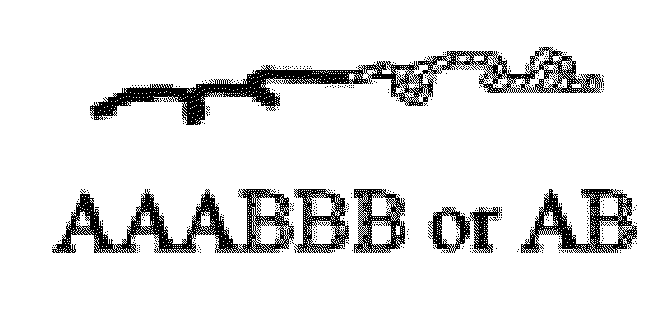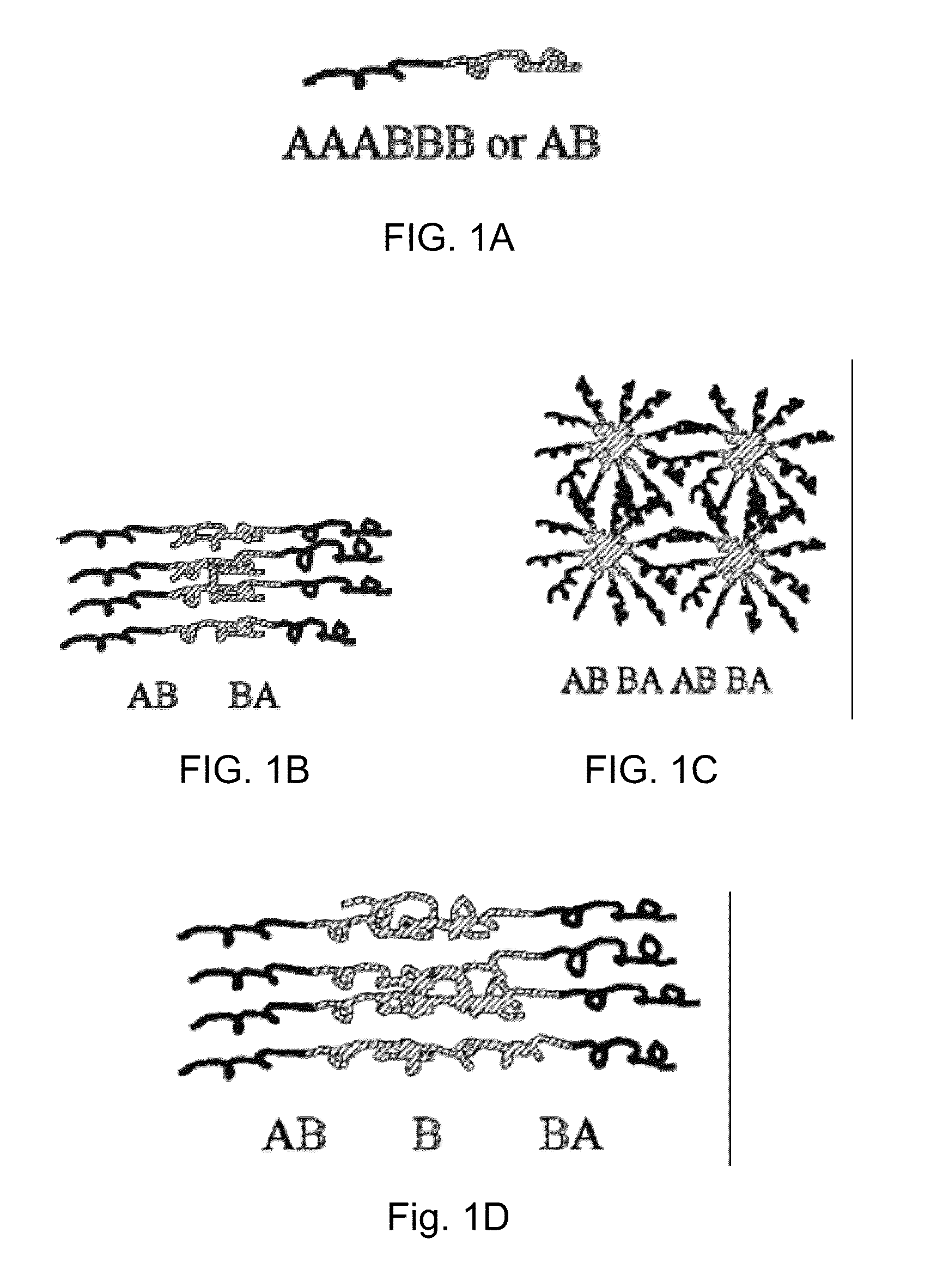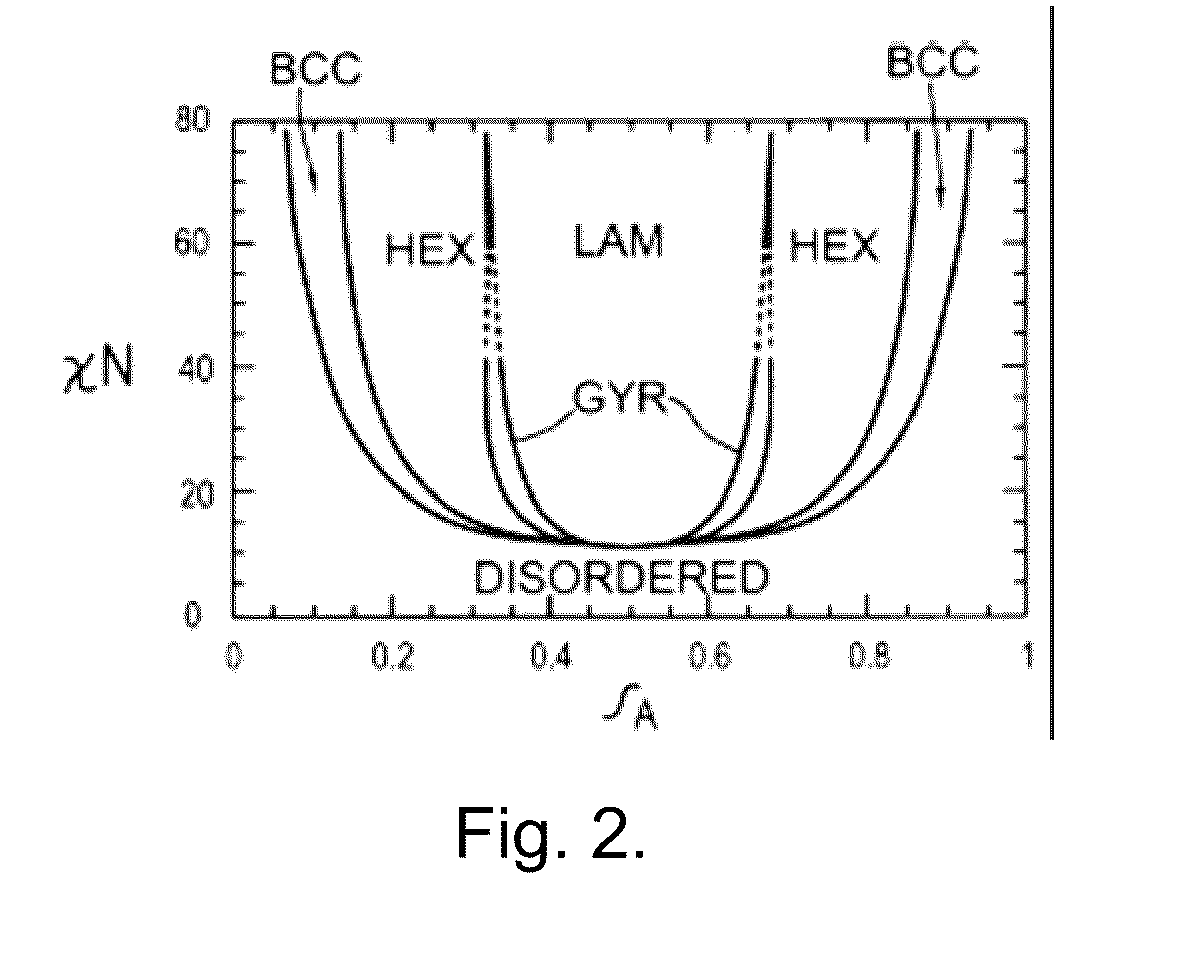Block copolymer morphology trapping in thin films using low temperature treatment and annealing for inhibition of marine organism attachment to surfaces
a technology of copolymer morphology and low temperature treatment, which is applied in the direction of decorative surface effects, duplicating/marking methods, decorative arts, etc., can solve the problems of increasing fuel consumption by, affecting and affecting the production cost of fish, so as to reduce the biofouling of surfaces and inhibit the attachment of marine organisms
- Summary
- Abstract
- Description
- Claims
- Application Information
AI Technical Summary
Benefits of technology
Problems solved by technology
Method used
Image
Examples
example 1
[0087]Fabrication of an Antifouling Coating Based on Polystyrene-block-Poly(2-vinyl pyridine)
Materials and Methods
[0088]The hydroxy terminated polystyrene-block-poly(2-vinyl pyridine) diblock copolymer (Polymer Source) and the photo-initiator benzophenone (Sigma Aldrich) were used without further purification. Polystyrene-block-poly(2-vinyl pyridine) (polydispersity index 1.06, number average molecular weight for polystyrene 75,000 g / mol and for poly(2-vinyl pyridine) 21,000 g / mol) and benzophenone were mixed in toluene to give a 0.3 wt % solution with a 1:1 w / w ratio between copolymer and photo-initiator. Thin films were prepared by spin coating the toluene solutions onto piranha cleaned silicon substrates at 2000 rpm for 45 seconds. The thin films were solvent vapor annealed using toluene and chloroform (1 / 1 v / v) for 3 hours. Furthermore, the films were UV irradiated using a Mercury Arc Lamp (Pen-Ray, 90-0012-01) with an intensity of 15 mW / cm2 for 5 minutes in air.
Surface Characte...
example 2
Inhibition of Zoospores of the Green Alga Ulva
Materials and Methods:
[0100]The hydroxy terminated polystyrene-block-poly(2-vinyl pyridine) diblock copolymer (Polymer Source, polydispersity index: 1.06, number average molecular weight for polystyrene: 75,000 g / mol and for poly(2-vinyl pyridine): 21,000 g / mol) and the photo-initiator benzophenone (Sigma Aldrich) were used without further purification. Polystyrene-block-poly(2-vinyl pyridine) and benzophenone were mixed in toluene to give a 0.3 wt % solution with a 1:1 w / w ratio between copolymer and photo-initiator. Thin films were prepared by spin coating the toluene solutions onto piranha cleaned silicon substrates at 2000 rpm for 45 seconds. The thin films were solvent vapor annealed using toluene and chloroform (1 / 1 v / v) for 3 hours. Furthermore, the films were UV irradiated using a Mercury Arc Lamp (Pen-Ray, 90-0012-01) with an intensity of 15 mW / cm2 for 5 minutes in air.
[0101]Polystyrene (Polymer Source, polydispersity index: 1....
example 3
[0108]Fabrication and Testing of an Antifouling Coating Based on Polystyrene-block-Poly(methyl methacrylate)
Materials and Methods:
[0109]Polystyrene-block-poly(methyl methacrylate) diblock copolymer (Polymer Source) was used without further purification. Polystyrene-block-poly(methyl methacrylate) (polydispersity index 1.10, number average molecular weight for polystyrene 130,000 g / mol and for poly(methyl methacrylate) 133,000 g / mol) was dissolved in toluene to give a 1 wt % solution. Thin films were prepared by spin coating the toluene solution onto piranha cleaned silicon substrates at 2000 rpm for 45 seconds. The thin films were solvent vapor annealed using acetone (1 / 1 v / v) for 5 hours.
Surface Characterization:
[0110]The surface topography was investigated using Atomic Force Microscopy (AFM). Measurements in air were performed with the AFM (Digital Instruments, Dimension 5000) operated in Tapping Mode and rectangular shaped silicon probes (NanoWorld, NCH) with resonance frequencie...
PUM
| Property | Measurement | Unit |
|---|---|---|
| thickness | aaaaa | aaaaa |
| temperature | aaaaa | aaaaa |
| temperature | aaaaa | aaaaa |
Abstract
Description
Claims
Application Information
 Login to View More
Login to View More - R&D
- Intellectual Property
- Life Sciences
- Materials
- Tech Scout
- Unparalleled Data Quality
- Higher Quality Content
- 60% Fewer Hallucinations
Browse by: Latest US Patents, China's latest patents, Technical Efficacy Thesaurus, Application Domain, Technology Topic, Popular Technical Reports.
© 2025 PatSnap. All rights reserved.Legal|Privacy policy|Modern Slavery Act Transparency Statement|Sitemap|About US| Contact US: help@patsnap.com



